When I left the site where the Iron Cross (La Cruz de Ferro) is located, I walked for over an hour at the more or less same altitude and I was rather happy and content in that part, remembering my old hiking days.
On the surrounding mountains I could see numerous wind-turbines and there I had an idea about the topic on which I could write that day – a contemporary Doña Quixote using her hiking poles to tilt at the windmills of the 21st century.
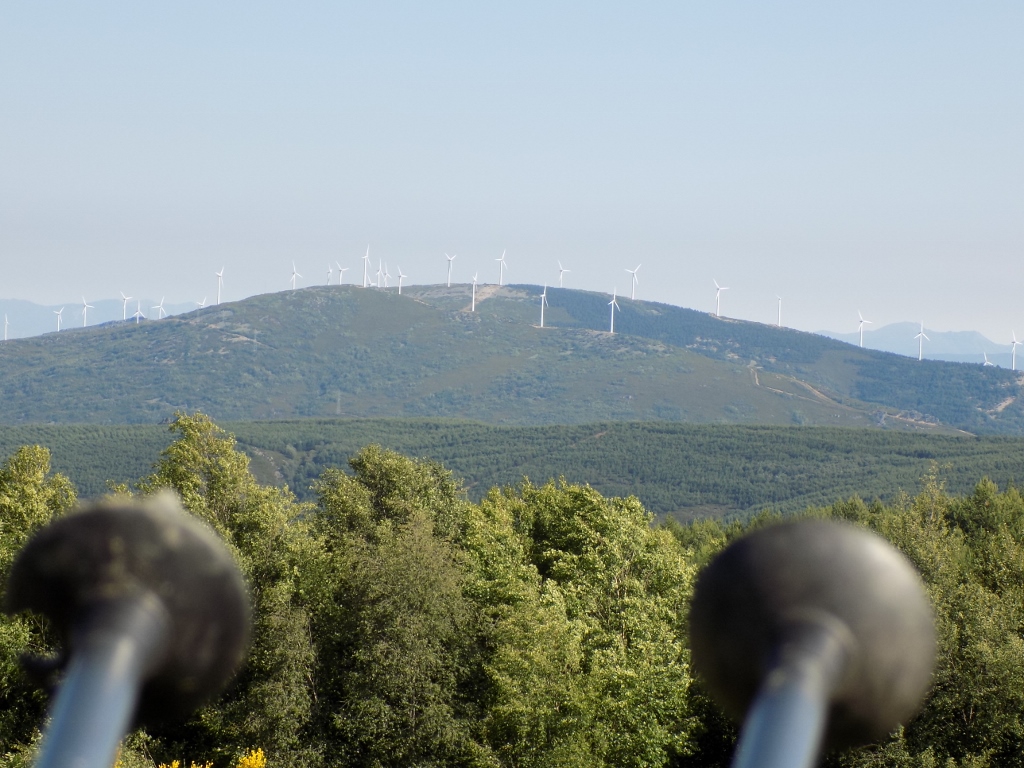 21st-century windmills
21st-century windmills
At one point, the Way leads through a forest and there I suddenly came across a place where somebody had left bananas, freshly cut watermelons, small juice packs, as well as some souvenirs, all together with a sign suggesting that a “donation” is expected in lieu of whatever one may take from there. It was interesting that there was absolutely no one there, but I’m certain that this functions quite well. El Camino is indeed a place where people exhibit their best and most honourable traits.
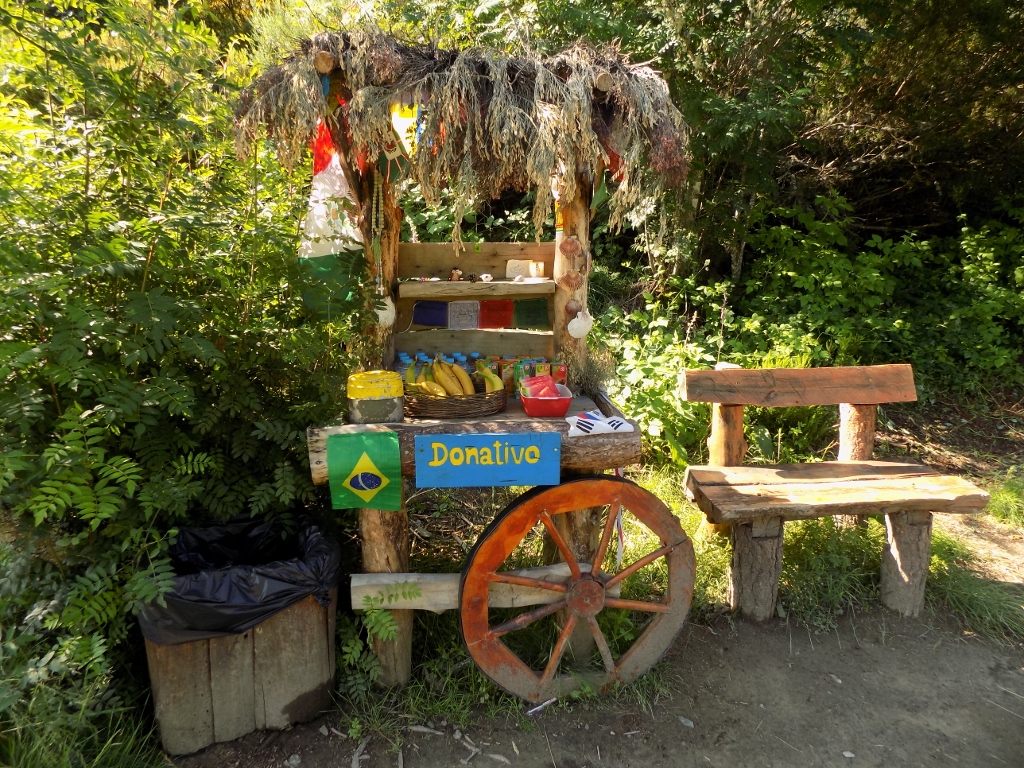 Help yourself and pay what you want for whatever you have taken
Help yourself and pay what you want for whatever you have taken
Then I got out of the forest and kept making frequent stops since I was completely flabbergasted by my surroundings – the landscapes, the vegetation, stunning sky, perfect temperature... Without any comments on my part, just look at the photos:
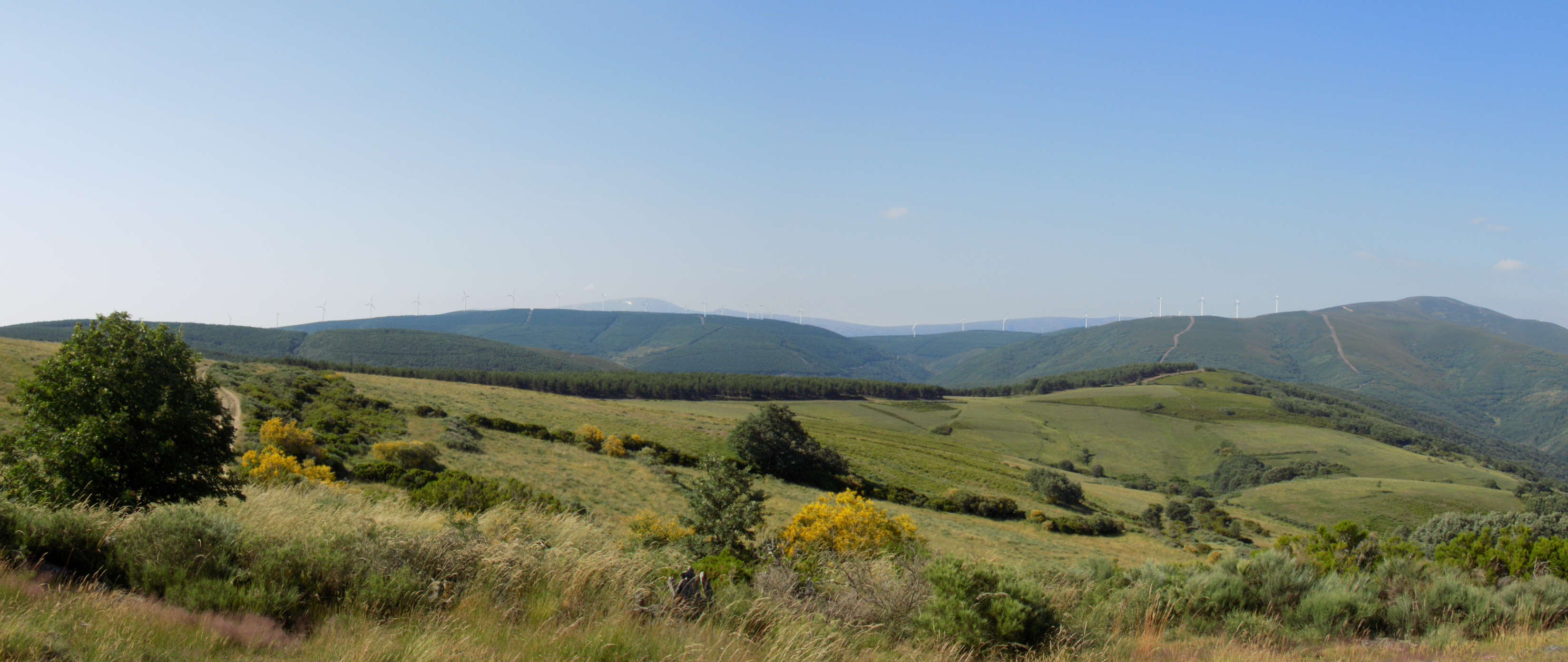
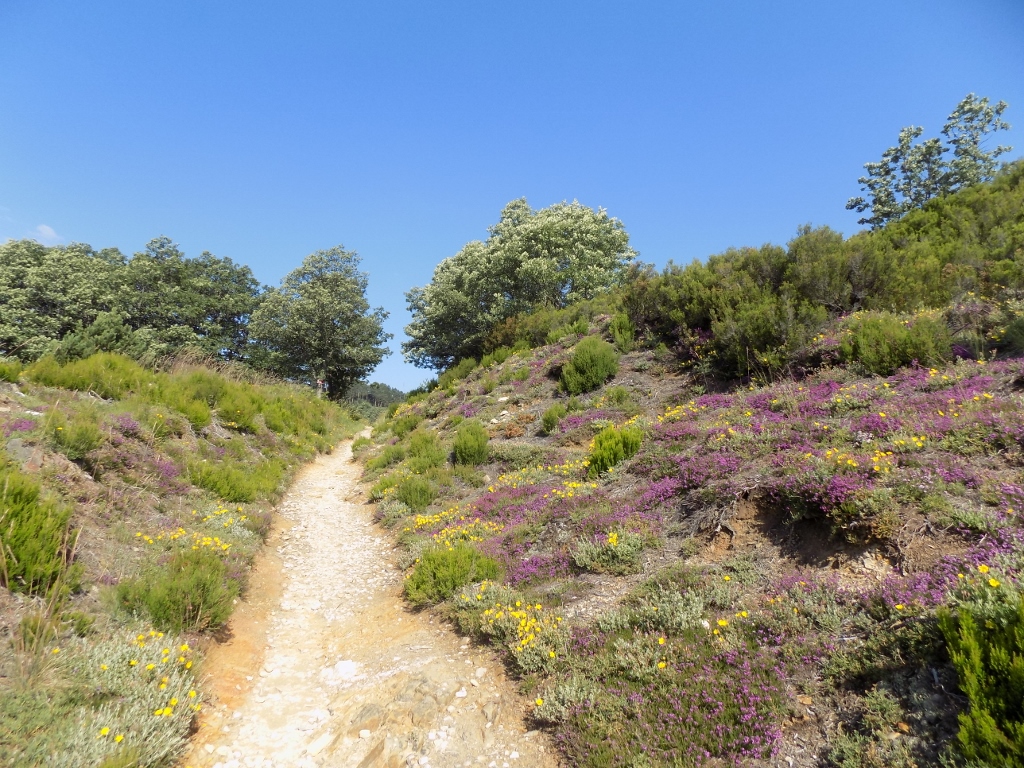 Walking across the top of mount Irago
Walking across the top of mount Irago
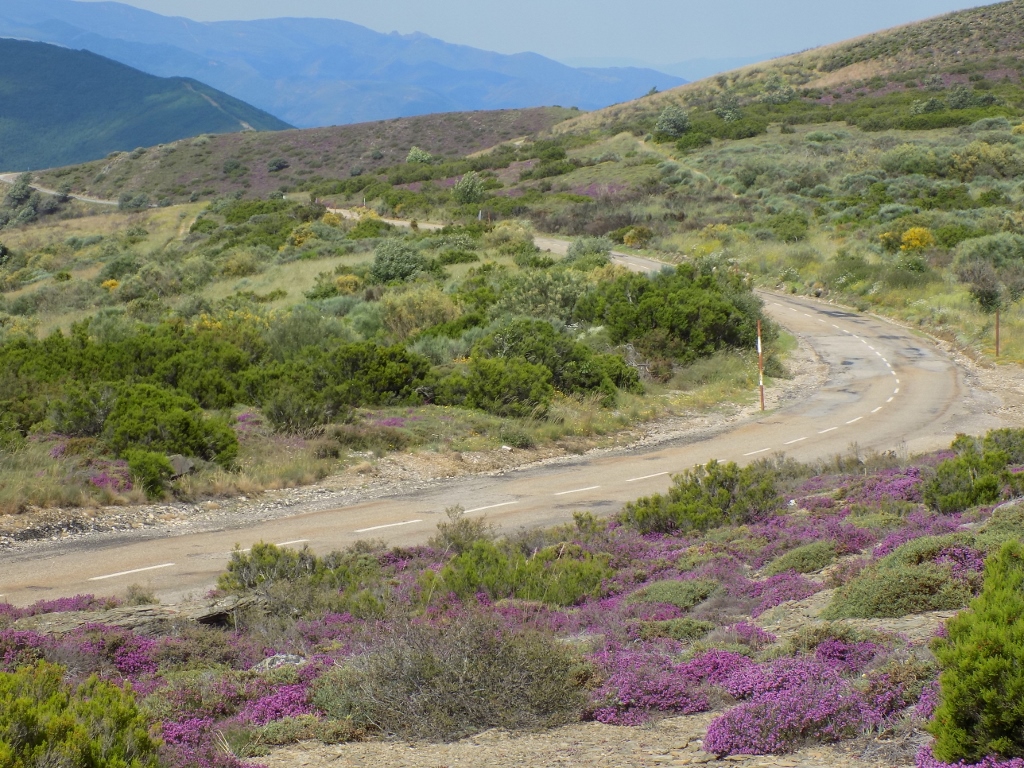 Walking across the top of mount Irago
Walking across the top of mount Irago
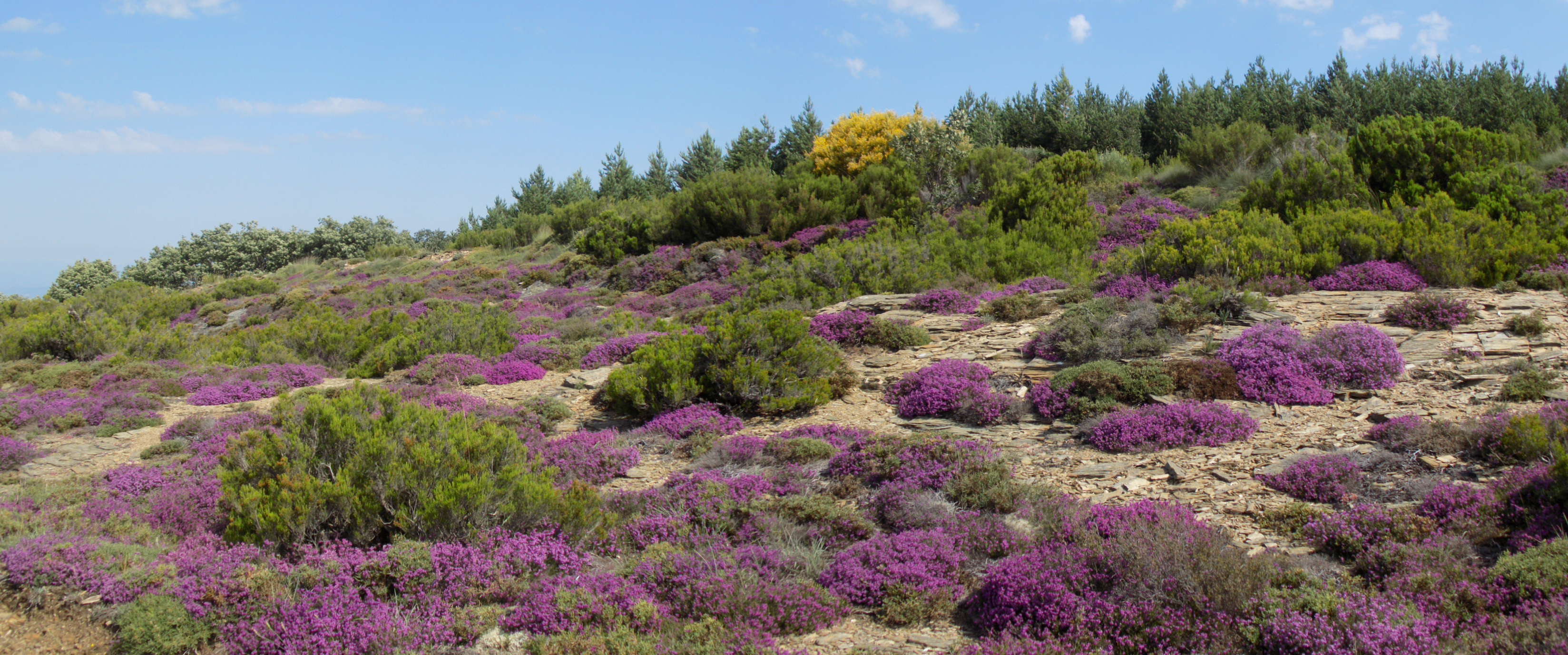
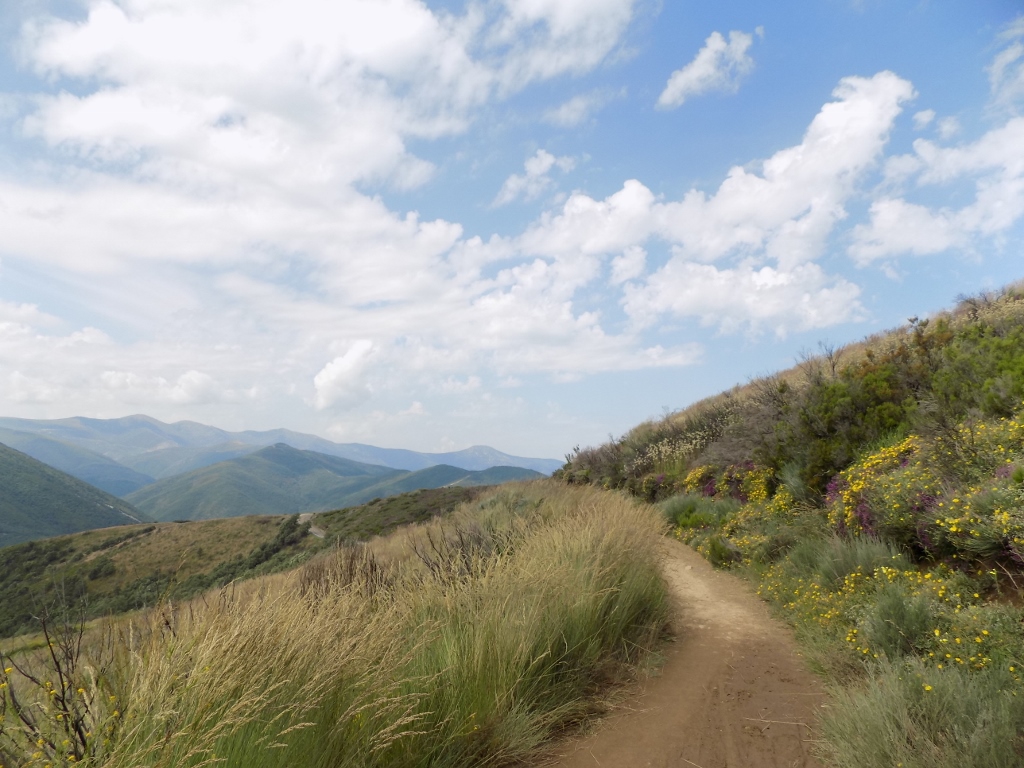 Walking across the top of mount Irago
Walking across the top of mount Irago
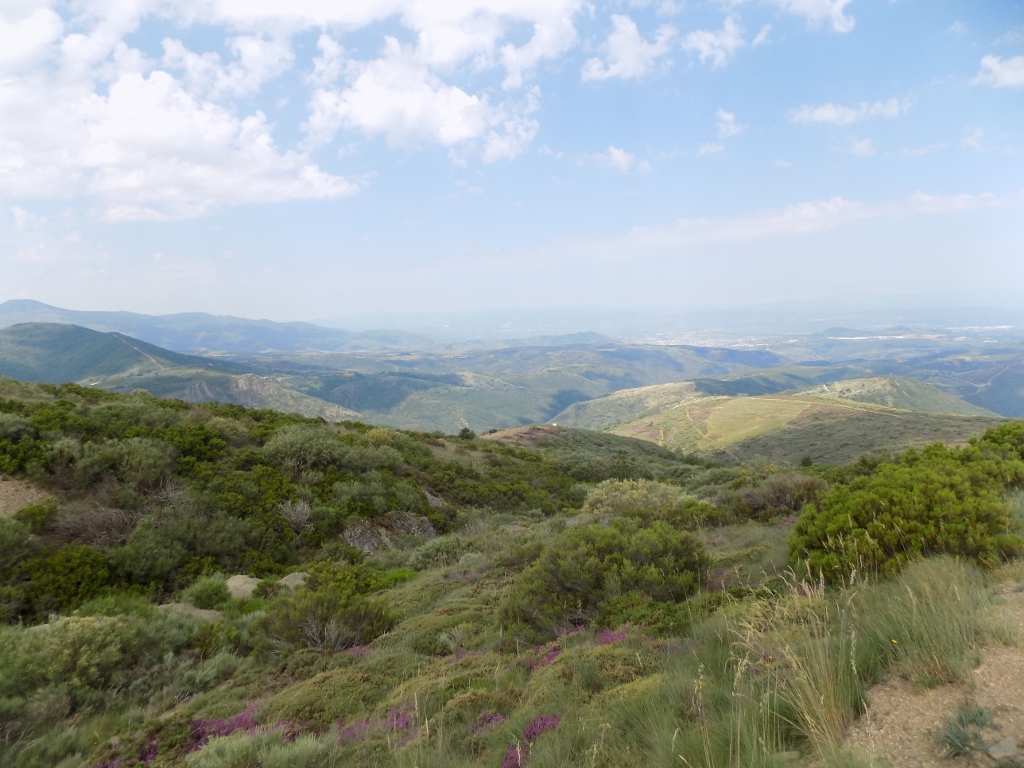 Walking across the top of mount Irago
Walking across the top of mount Irago
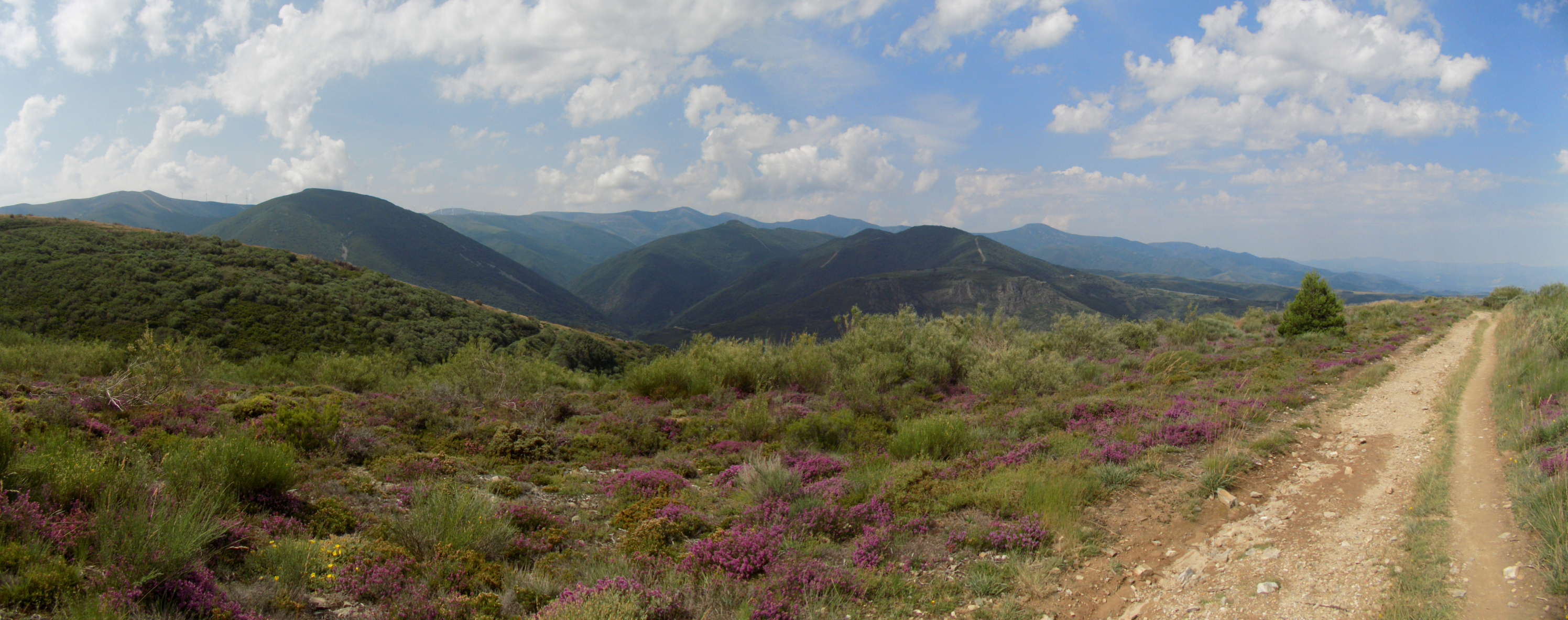
Still, you should not think that everything on the Way of St James is perfect and beautiful. Every now and then, people here are reminded of the reality of life, which also entails death, by memorial plaques or signs that one comes across on the way and that mark the spot in which a person has passed away. At one point, I saw a plaque which said that a young man, only 17 years of age, had died there and that really shook me to the core. He didn’t even start to live or perhaps he had done everything it was his to do. Among other things the plaque said: “A ship in harbour is safe — but that is not what ships are built for.”
I walked for a while under the very strong impression which seeing this memorial made on me, but then my body and what was happening in it took centre stage. Namely, after the fabulous section when one walks over a plateau, the Way starts to descend rather steeply, while the path itself was very awkward for walking on account of a difficult surface – hard ground, pebbles of all shapes and sizes, rocks... and all at a very high gradient. At one moment I wondered if I should move to the nearby asphalt road and use that option for reaching the final destination of the day, but eventually I didn’t. I also think that was a mistake on my part, but by the time I realised that it was just too late.
Thus, I barely managed to drag myself to the final destination for that day, since with each step I felt very strong pain coming from the blisters on my toes and the inflamed tendon. Village El Acebo practically consists of a single main street, while the houses which mostly serve for the accommodation of pilgrims are lined up on both sides. I was again delighted by the pictorial houses, but it was quite clear to me there would be no sightseeing on this day, so I took an opportunity while walking through the village to take a couple of photos.
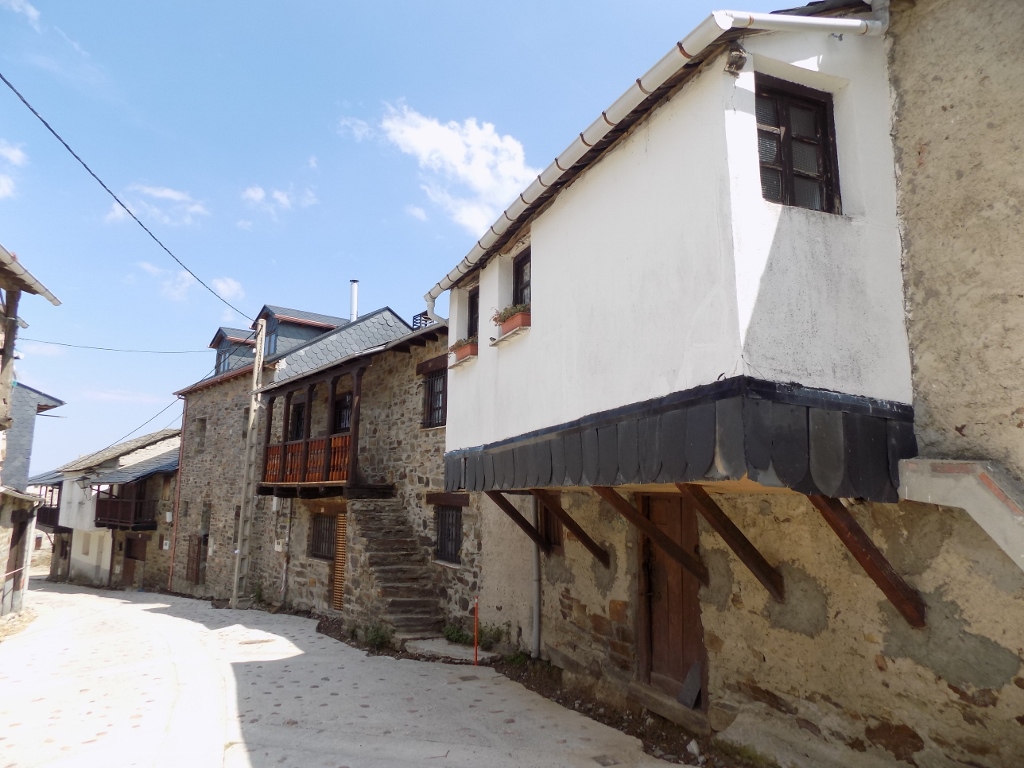 Village El Acebo
Village El Acebo
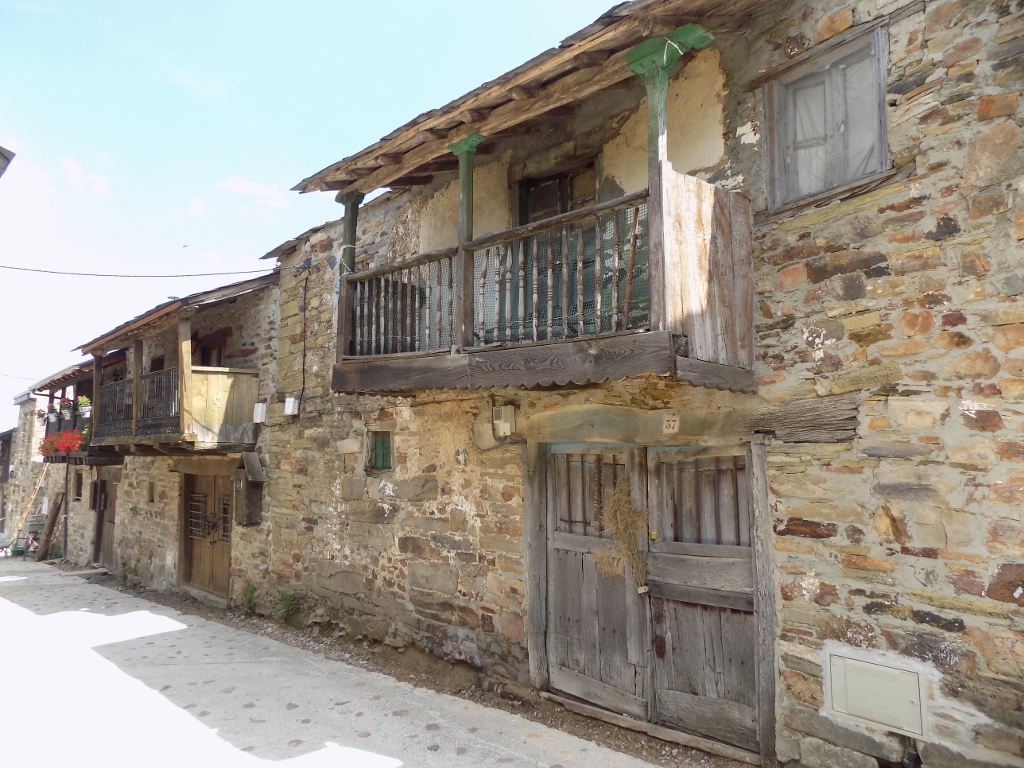 Village El Acebo
Village El Acebo
Taking into account the very demanding section I had just passed and knowing that something similar may be expected in the first part of the following day, I had just figured out that I would then walk along the road and not the Way, when I got to the albergue where the first thing Francesco asked was if we could go along the asphalt road tomorrow. I love reasonable people!
This albergue also had a small garden in the back and there the three of us first sat down in order to refresh ourselves with a beer or a clara. Then we withdrew to the dormitory where we had the regular daily ritual – taking shower first and then going to the laundry section in order to wash the clothes we had walked in that day.
In this albergue, the bathroom with a few shower enclosures was accessed directly from the dormitory, so, while waiting for my turn, I had an opportunity to attend a proper concert. Namely, Francesco loves to sing and this also means singing while in the shower. This day, however, he was also joined by a Spanish man and that was fantastic and absolutely joyful! I was thoroughly delighted and enjoyed the experience.
While I was repacking my things, following my own shower, I couldn’t help hearing a couple of Americans who shared the same dormitory making comments regarding the shower stalls (which seemed to me quite decent for a modest, inexpensive hostel) and they both agreed that they would certainly appreciate their state of affairs when they go back home. What they wanted to say was that their circumstances were much better than here in Spain, but apparently they did not appreciate them enough. Then I thought what they would say if they came to Serbia, but then again I also thought that we were certainly not the “worst.” There you go, everything is relative.
Having washed my laundry and having put it out to dry, I went to the restaurant of the albergue and had a very nice meal, but I also posted a new text on the social network.
Day 26: “Doña Quixote”
The times are changing, matriarchate is coming back and no matter how idiotic and pointless the political correctness is to me as a woman (you may call me anything you want for as long as you ESSENTIALLY respect me as a person and vice versa), it is quite in order to point out the leading role of women in some of the situations and to call things their proper name. Thus, walking along the paths from which I could see wind-parks, I was thinking about how nowadays Doña Quixote would have to use her hiking poles to tilt at the electric windmills. With the same effect, I must add, as her historical and literary namesake.
To start with, this Doña Quixote has simply announced to the two Sanchos that she will no longer leave the hostels in the pitch black (yesterday we left at 5:15 am!). One of the them has already been here twice, the other one was here last year and I will most likely never come back again, so what is the point to look in the dark and see nothing!!!??? Especially now, when we have left urban settlements and the nature has taken over again. Let the two of them go forward, I will just follow their steps at leisure and then we will meet at the hostel we have agreed upon. That gives me an opportunity to walk in a more relaxed manner (and I’m actually not too slow anyway) and to take photos in an even more relaxed way.
There is another reason why I decided to be a little solitary today. After village El Ganso, the path starts to ascend and one has to cover an altitude difference of 500 metres upwards and then almost the same downwards. Such things are best done at one’s own pace. And here we come to yet another, almost hidden, but very important lesson, perhaps the pivotal one:
Lesson no. 8: It is absolutely necessary to learn to be alone!
There are no words in which I could emphasise the importance of this lesson. Once a person masters it, then it is quite alright to be alone, or to be with a partner, or with children, or with parents, or with friends, or with all of them, or with the whole world, from time to time or all the time, but just for as long as a person knows how to be alone then this person and everybody the person spends their time with (not just any abstract time, but their LIFE), they will all know that they are together only because they want it and not because of despair or fear to be alone.
So, today I’ve decided to be alone from time to time or all the time. And, as you all already know, I’m not a bad company at all. Not even to myself.
In front of me: 235 km
Behind me: 632 km
After lunch, I went up to the dormitory and started to browse on the internet and then I realised it had started to rain. All our washed laundry was outside trying to get dry. Francesco and Gabriel were also in their beds, so I consulted with them as to what to do. Suddenly, the skies opened and it just poured and so we decided not to do anything, apart from resting, for it was already too late as far as our laudry was concerned. Afterwards it all got sorted out in a very elegant and satisfactory way. I was only sorry that we could no longer sit outside in the garden, but at least we had lovely dinner at the hostel’s restaurant.
The following morning, we started again very early, when it was dark, but this time we did walk along the asphalt road. Still, at some point we decided to move to the proper Way that forked from the asphalt road and that was nicely wide and earthy in that part, which after the rain meant it was a little softer and therefore kinder to the feet and legs. However, soon the Way started to go through some gulches, again with big and small stones that wobbled and rocks that firmly stood in their place, and it was all still a little wet, so it was again very important to tread carefully. Also, from time to time it was again very steep and I once more had huge pressure on my toes and tendons. Very unpleasant and painful experience, but there was no solution, for we had separated completely from the asphalt road.
There was, however, a moment that for an instant took my mind away from the pains, not only because I stopped and made a brief respite, but also because this break served for me to take photos of the beautiful scenery in front of me. Please neglect the industrial plants along the perimeter and the overhead power lines on the left-hand side and concentrate on Molinaseca and the ribbons of mist spreading in the background of the village.
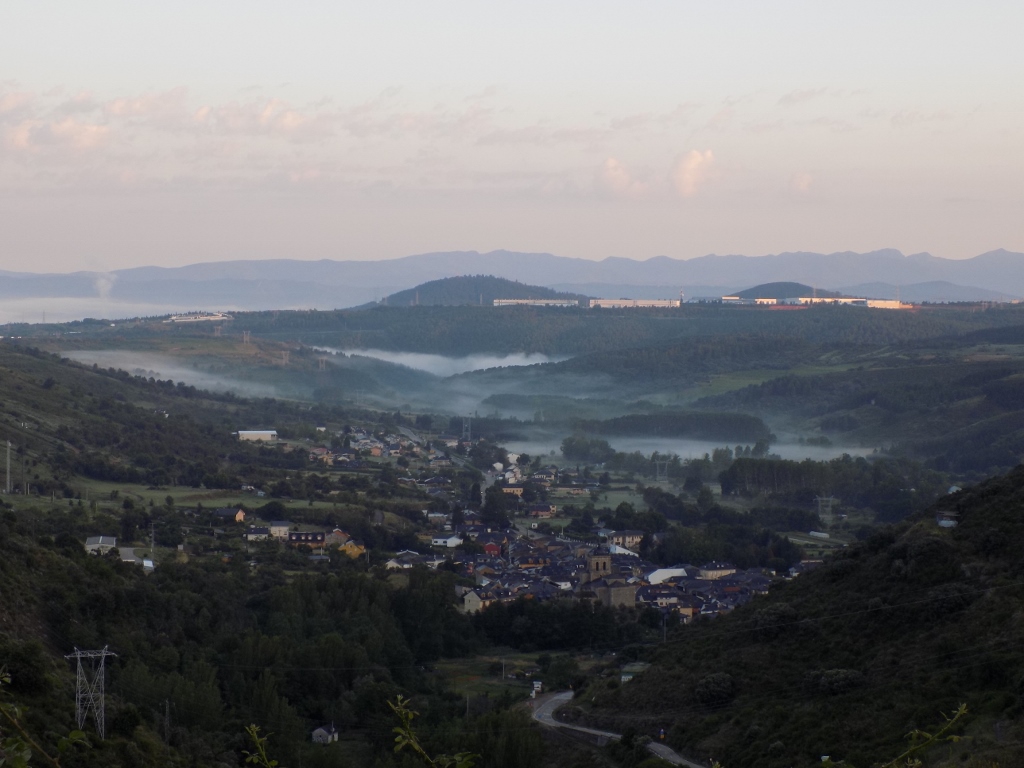 View at the valley nesting village Molinaseca
View at the valley nesting village Molinaseca
Near the entrance into the village, we met again a Frenchman whom we had met earlier that morning when leaving El Acebo. He told us then that in León he even had to stay at a hospital, but managed to recuperate enough to continue walking. As opposed to the three of us, this morning he walked all the time along the asphalt road, since he did not want to experiment with the paths that constitute the Way in this section. Meeting him again at this particular point also was a good opportunity to exchange favours with taking photos.
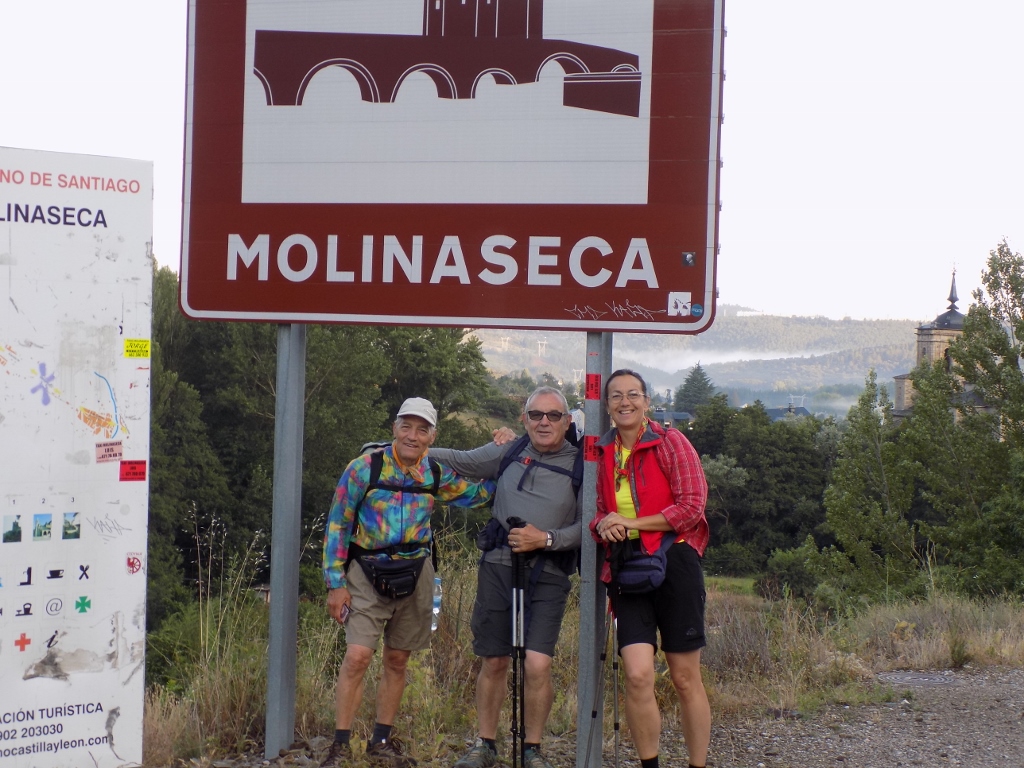 At the entrance into Molinaseca
At the entrance into Molinaseca
Molinaseca is a very picturesque place. In addition to the church which is passed by at the very entrance into the village, in order to reach the centre, it is necessary to walk over a bridge built during the reign of the Ancient Rome. Francesco was all the time very proud of the Roman bridges we came across on the Way of St James, so Gabriel and I started to tease him and as soon as we would see any bridge at all, the two of us would shout: “Ponte romano!,” and then all three of us would laugh wholeheartedly. Still, the bridge in Molinaseca is indeed very old and from the Roman times, but before crossing it, it is really worth making a slight detour in order to have an even better view at the bridge and its surroundings.
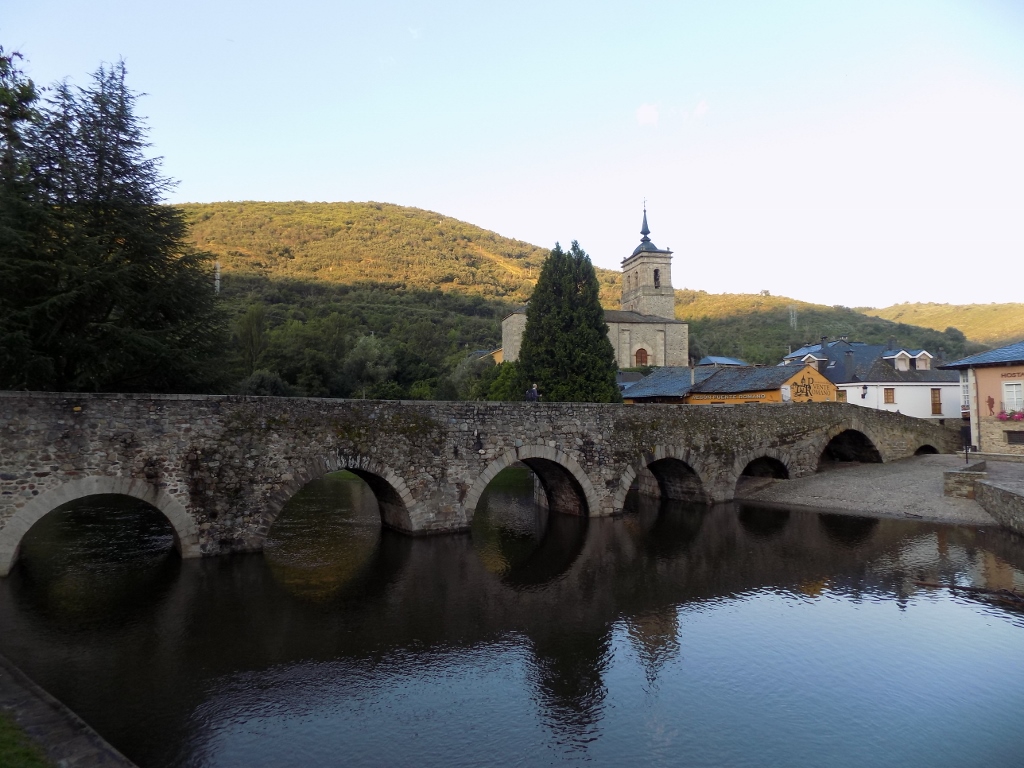 Roman bridge and the Meruelo river
Roman bridge and the Meruelo river
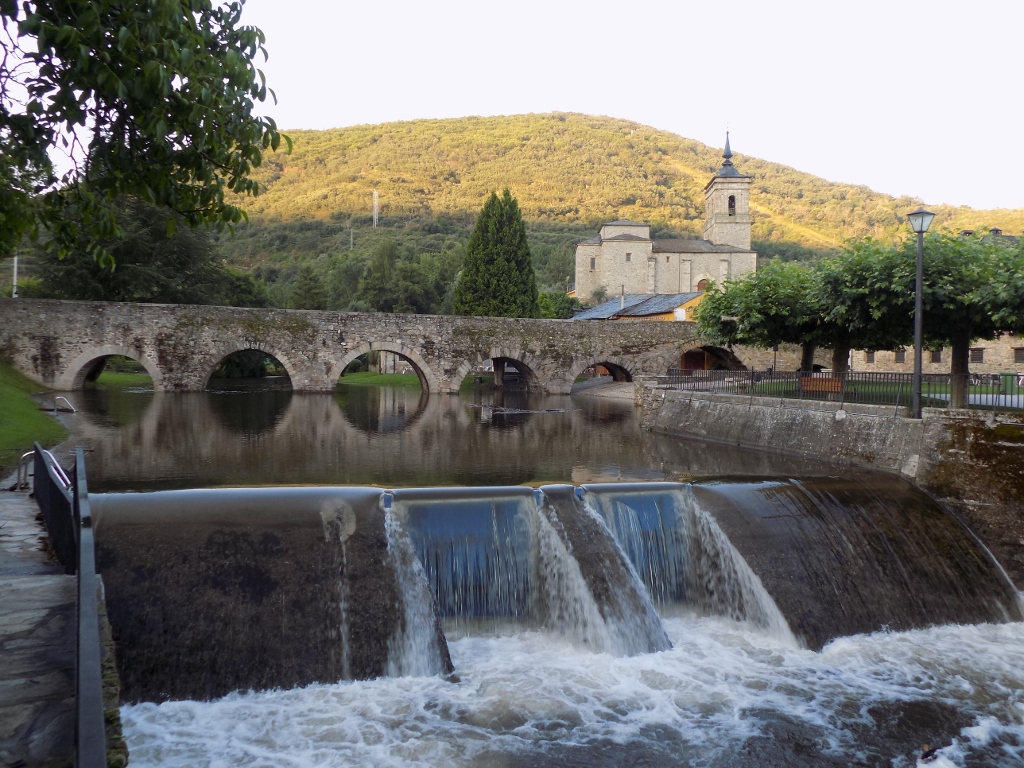 Roman bridge and the Meruelo river
Roman bridge and the Meruelo river
When we got to Molinaseca, we had already covered almost 8 km that morning and were ready to sit somewhere and have breakfast. However, as it was still too early, nothing was open and thus we reached the exit from the village. There, at some point, we passed by a pilgrims’ albergue and stopped for a second there to see if they had any bar where we could sit down. There wasn’t, but as we were standing and looking, who comes out of the albergue? Who else, but our dear Angela!!!
Oh, how happy we all were because of the new encounter, because of the incredible coincidence and the labour of the higher power that indeed wanted us to keep meeting each other along the Way. For, no matter how rational one can be, there was simply no other explanation for this. Just a half a minute before or after and we wouldn’t have seen each other.
So, we waited a little for Angela and her co-pilgrims to start and then, as a slightly bigger group now, we headed for the town of Ponferrada, talking about the impressions and events of the last few days.
When you approach Ponferrada, there is a possibility to enter the town either following the main streets or going a little bit around. The three of us opted for the direct route, while Angela and her friends followed the dirt road that was slightly longer. Still, when we entered the town, I made a mistake about some signs and then we followed a detour that was actually intended for vehicles and we ended up walking a lot without any real need for that. All in all, when we finally found a place to sit down, I was completely exhausted from the pain in my legs and thus I decided to make a longer break at this point. Previously, we had crossed a bridge over the Sil river and from there I could see glimpses of the Templar Castle.
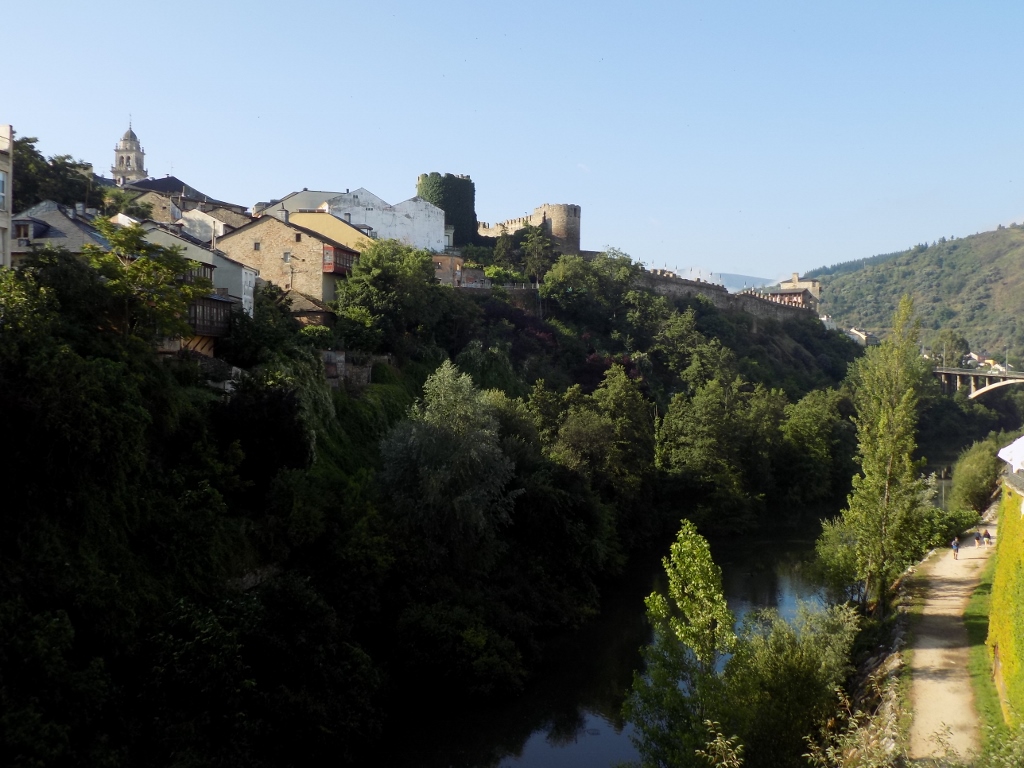 View at the Templar Castle from the bridge over the Sil
View at the Templar Castle from the bridge over the Sil
While we were having breakfast at the bar we had chosen, Francesco said he would like to walk over to the Castle. Under any reasonably normal circumstances, I would have loved to do that as well, but on this occasion I just wanted not to move, so I said I would wait for him. Gabriel was not interested either in the visit to the castle or the waiting, so we all agreed he should continue and the two of us would come after him later.
When the two of them went their separate ways, I even put a sanitary pad on the front part of my right foot, trying to help myself, but as it would turn out later, this did not help much at all. I guess it was just too little too late.
So, I waited for Francesco and then the two of us moved on. We had almost 10 km more to cover. When leaving Ponferrada, one goes through a part of the town with very nice houses and estates. I found it particularly interesting that some of the owners have a serious inclination towards the Way of St James and that they creatively help and give support to the pilgrims passing by their property.
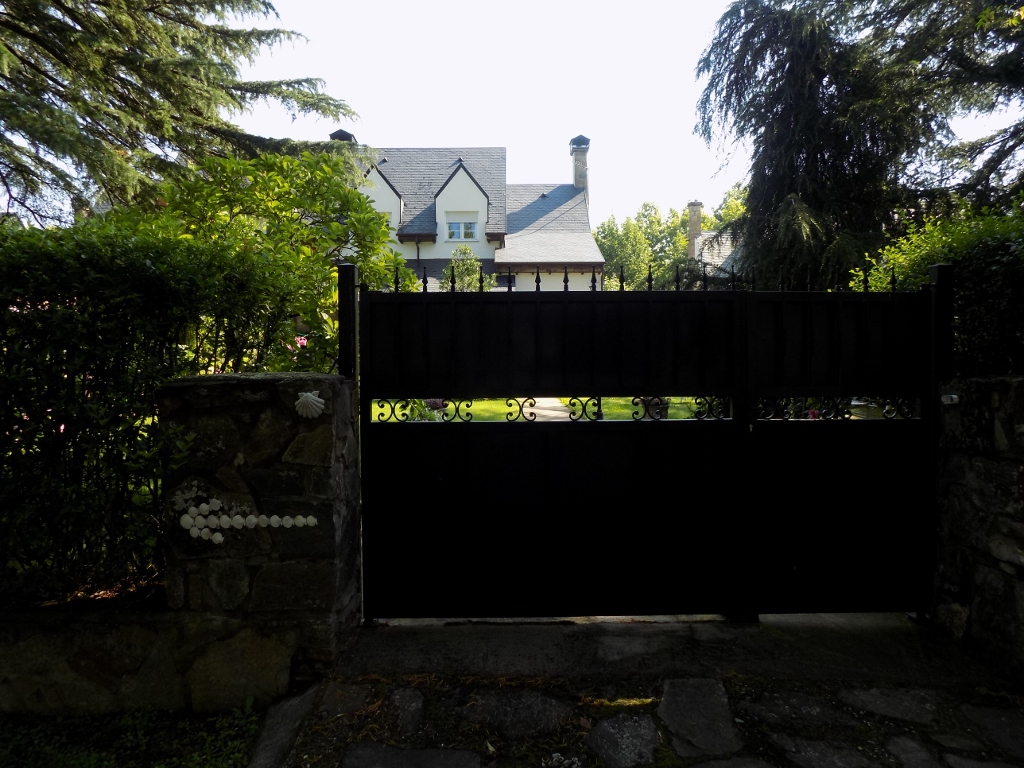 One of the houses passed by the Way of St James (please note the white arrow on the left-hand side)
One of the houses passed by the Way of St James (please note the white arrow on the left-hand side)
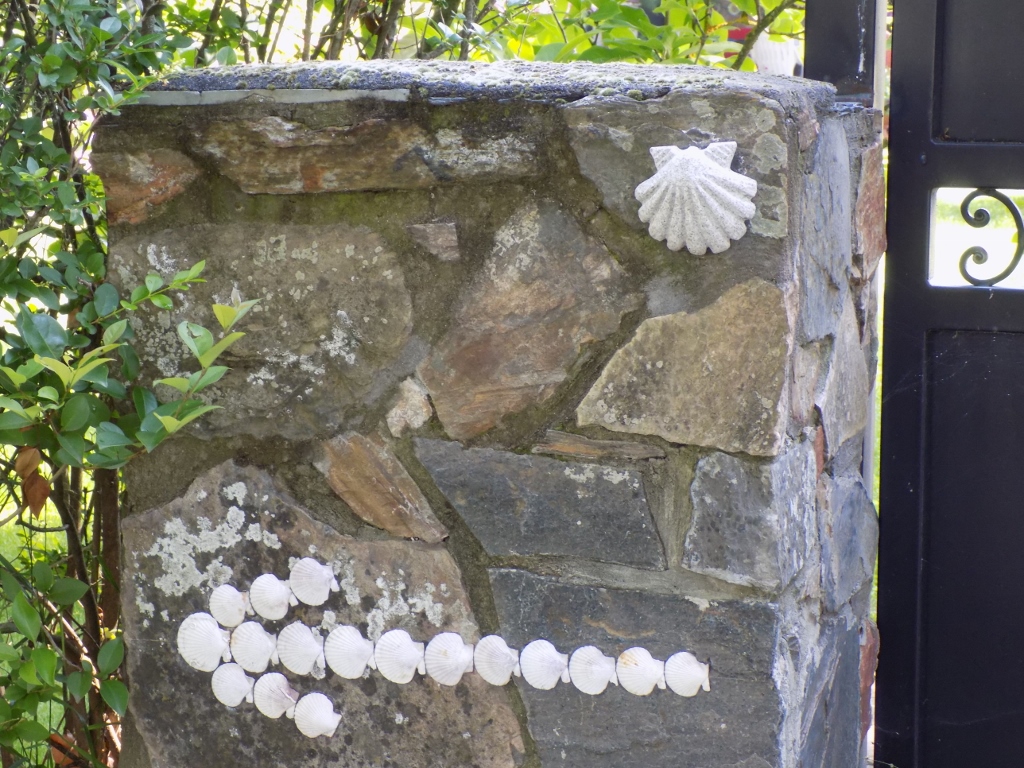 Now the same arrow up-close – it’s all made of shells, small scallops
Now the same arrow up-close – it’s all made of shells, small scallops
The Way also leads literally (!) THROUGH some interesting places. Thus, at some point, we went through a sort of tunnel made in a building, since the Way goes through the building, i.e., over time the building was made right across the Way!
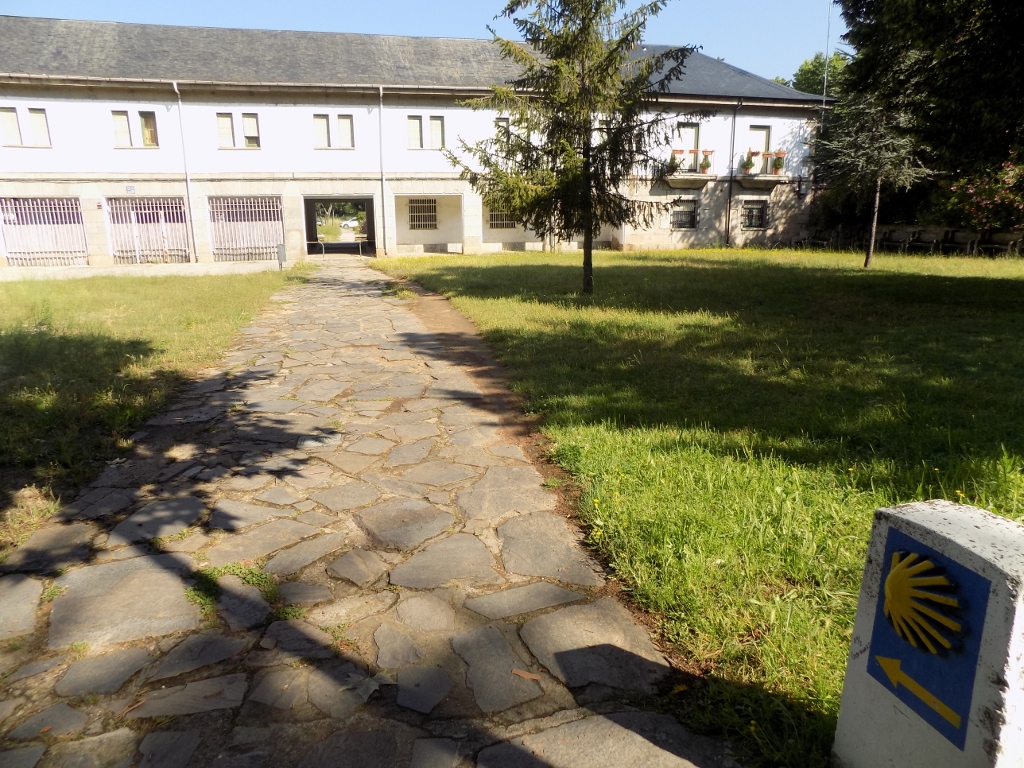 Way of St James has some very interesting places
Way of St James has some very interesting places
In the next village, we came across a house in the yard of which there was a cherry-tree that had abundant fruits this year. As regards the cherries we saw along the way these days, for me it was interesting that they were ripening in July, since that is practically a whole month after the cherries ripen in Serbia, while Spain and Serbia are at the relatively same latitude. Be as it may, we saw the owner of the house and then Francesco asked if we could get us some cherries and very kindly she permitted it.
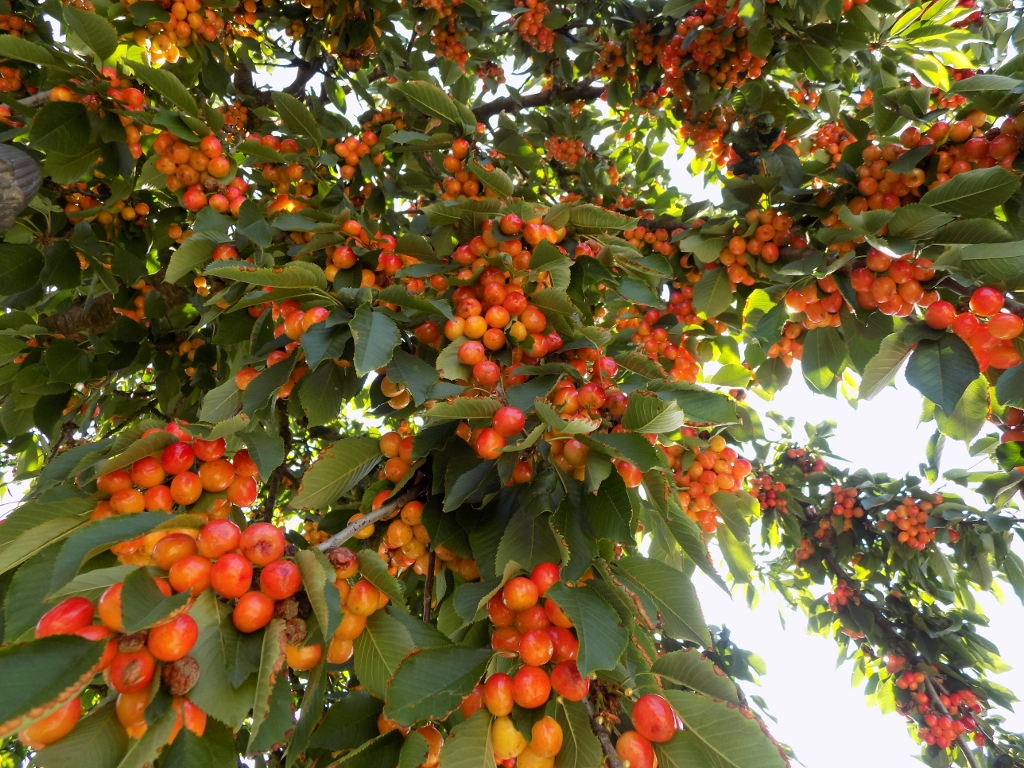 The cherries gave a very good yield this year
The cherries gave a very good yield this year
Thus, I got a lovely cherry bouquet from Francesco and we also took some for our friend Gabriel.
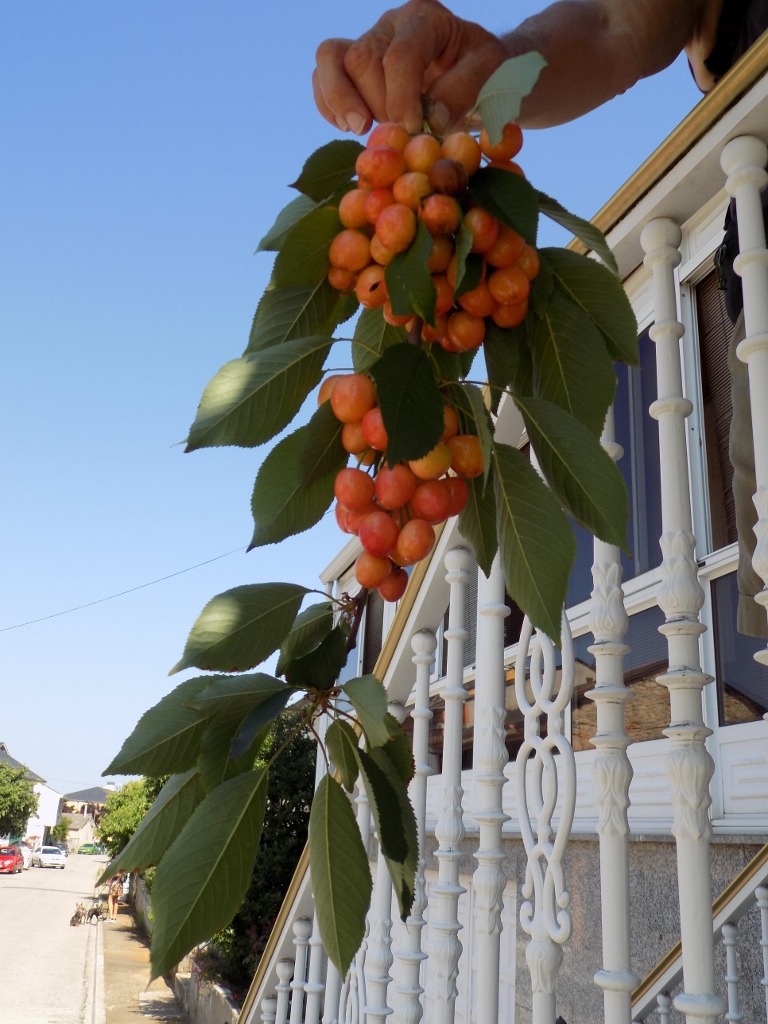 Wonderful cherry bouquet
Wonderful cherry bouquet
This was all happening in village Columbrianos in which we also passed by a local parish church. Already from the exit from Ponferrada, we started to come across a new type of signs that showed the direction of movement, by consisting of a stylised pilgrim’s staff held by a hand, with a scallop and an arrow above.
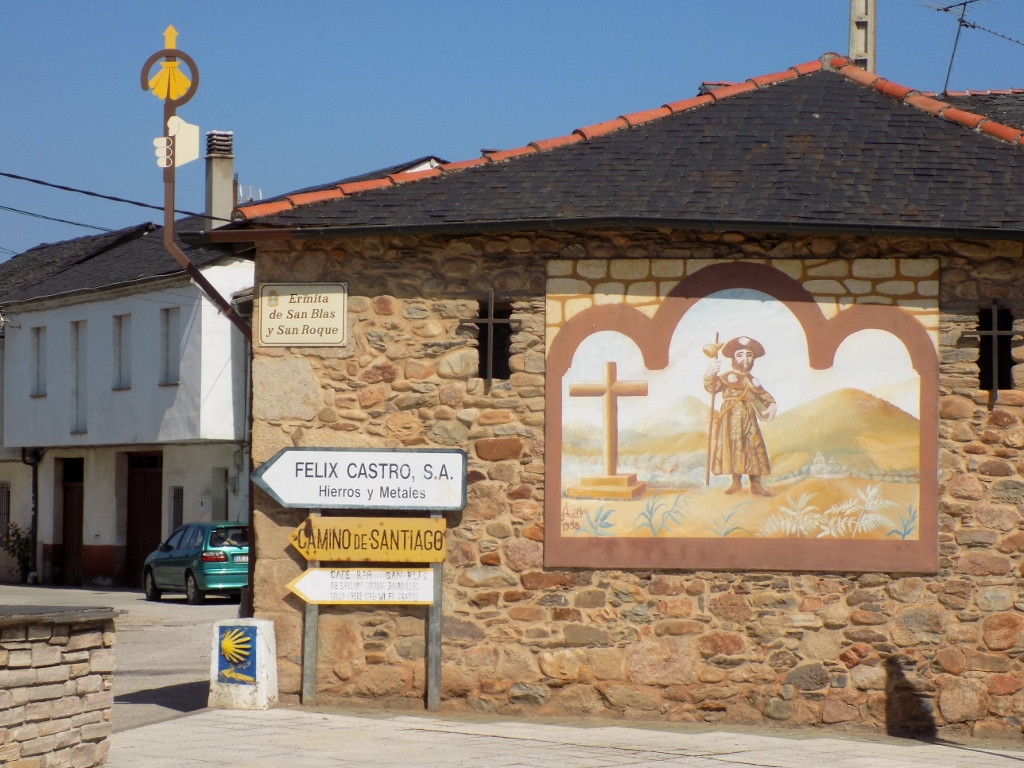 The parish church in Columbrianos
The parish church in Columbrianos
We also went through village Fuentenuevas before finally reaching Camponaraya, where we met Gabriel at the albergue we had agreed upon before and we could finally have a rest there.